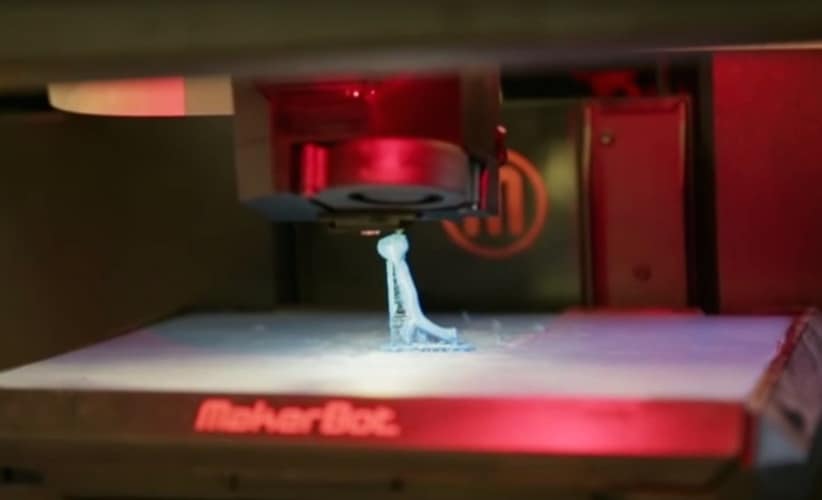The technique was trialled on a 6-year-old patient with a lung condition that requires repeat ‘lung-washing’ treatments in order to clear dangerous build-ups of material in these organs. During the procedure one lung is ventilated while the other lung is washed out and although this process is relatively straightforward to perform in adults, the tubes used to ventilate and wash out the lungs are large and sometimes difficult to use in children.
Multiple tubes therefore have to be positioned with great precision as quickly as possible in order for it to be safe in children who have little normal lung capacity with which to breathe.
https://www.youtube.com/watch?v=LzPYcwE6NxE” frameborder=
After CT scanning the patient, the team used a Makerbot FDM (fused deposition modeling) based device to 3D print a ‘made-to-measure’ tube that was an exact replica of the patient’s trachea in terms of shape and size.
This allowed the anaesthetic team to match up the most appropriately sized tubes and practice their insertion in to the airways prior to surgery, making the actual surgical procedure quicker and more efficient.

Colin Wallis, respiratory consultant physician at GOSH said: “Each time a child comes in to have their procedure they will have grown and so require different equipment to be used for their treatment. A model that is tailor-made to the child each time they have treatment means that the right sized tubes can be identified prior to surgery and a child can potentially be under anaesthetic for a shorter period of time.”
Owen Arthurs, GOSH consultant radiologist who scans patients to gain exact sizes for the model, added: “In the future, 3D printing could feasibly be adapted to scan and create many more organs in the body making a larger number of surgical procedures safer, quickly and easier.”




Poll: Should the UK’s railways be renationalised?
I think that a network inclusive of the vehicles on it would make sense. However it remains to be seen if there is any plan for it to be for the...